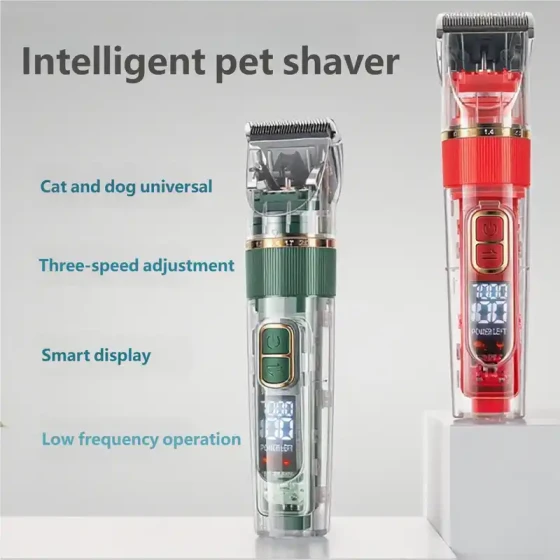What to Do If Humans Get Ringworm from Cats_5 Effective Treatment Methods to Quickly Get Rid of the Trouble
Ringworm from cats sounds like a skin disease exclusive to cats, but if you're not careful, “pet owners” can also get infected. In fact, cat ringworm is a fungal skin infection, medically called dermatophytosis. When humans come into contact with fungus-carrying cats (or objects they have touched), they may get "infected." Don’t worry, human ringworm is not scary. As long as the correct treatment is taken promptly, you can usually get rid of the trouble quickly.

Simply put, cat ringworm is a fungal infection. The most common "pathogen" is Microsporum canis, a fungus that likes to live on cats’ skin and fur. Although called "cat ringworm," dogs, rabbits, and even soil can carry this fungus. When human skin comes into contact with these fungi, if there are tiny skin injuries or the body's immunity is low, fungi may invade, settle in, and cause inflammation, manifesting as itchy rash.
Symptoms of cat ringworm on humans
Humans with cat ringworm usually do not experience hair loss or large areas of ringworm patches like cats. The most typical symptom is round or oval red patches with clear edges, slightly raised, sometimes appearing like a "ring" or "circle," with the center skin relatively normal or with scaling. These patches usually come with obvious itching, making people want to scratch.
Cat ringworm can appear anywhere on the body, but is more common on exposed parts such as hands, arms, legs, face, etc. If not treated promptly or with repeated infections, patches may enlarge and increase in number. Sometimes, it may present as atypical rashes, making diagnosis a bit complicated.
Why do humans get cat ringworm?
As mentioned earlier, the main reason humans get cat ringworm is contact.
- Direct contact with an infected cat: This is the most common way. If a cat carries the ringworm fungus, even if no obvious symptoms are visible to the naked eye, petting or holding it can transfer fungus to humans.
- Contact with contaminated items: Cats’ sleeping mats, toys they played with, even fallen hair can carry fungal spores. These spores can survive long in the environment, and if humans touch these contaminated items and then touch their skin unknowingly, infection may occur.
- Damaged skin barrier: If the skin has scratches, abrasions or is in a damp environment for a long time, the skin's natural barrier decreases, making it easier for fungi to invade.
- Low immunity: Children, elderly, or those with compromised immune systems have weaker resistance to fungal infections, making them more susceptible to cat ringworm.
How to diagnose?
If you suspect you have cat ringworm, the best approach is to see a doctor, especially a dermatologist. The doctor will conduct a preliminary diagnosis based on the rash's appearance and your contact history (e.g., whether you have pets or have recently touched cats).
To diagnose more accurately, the doctor may suggest some tests, such as:
- Wood's lamp examination: In a dark environment, a special ultraviolet lamp (Wood’s lamp) is used to illuminate the rash area. Some fungi causing cat ringworm will fluoresce yellow-green under the Wood’s lamp, but not all fungi types can be detected this way.
- Microscopic examination: The doctor will scrape some skin scales from the edge of the rash and observe under a microscope for fungal hyphae or spores.
- Fungal culture: Skin scale samples are sent to the lab for fungal culture. This is one of the most accurate diagnostic methods to identify the fungal species. However, cultures may take from several days to weeks.
Never self-diagnose or self-medicate, because many other skin diseases look similar to cat ringworm, and using the wrong medicine may delay treatment.
5 effective treatment methods for humans with cat ringworm
After diagnosis, the doctor will prescribe a treatment plan based on your specific condition. The main goals of treating cat ringworm are to eliminate fungi, relieve symptoms, and prevent recurrence. Here are common treatment methods:
- Keep the affected area clean and dry: This is fundamental and crucial. Fungi love damp environments; keeping skin dry inhibits fungal growth. Wash the affected area daily with clean warm water, then dry thoroughly. Avoid using irritating soaps or shower gels.
- Topical antifungal medications: For localized ringworm, topical treatments are usually preferred. Various antifungal ointments, solutions, or sprays are available, commonly containing ketoconazole, miconazole, terbinafine, etc.
- Usage: Follow the doctor’s instructions or medication leaflet, usually applying 1-2 times daily. Apply slightly beyond the edges of the lesion to ensure killing fungi around the area.
- Treatment course: Topical treatment usually requires a long course. Even if the rash appears gone, continue medication for 1-2 weeks to thoroughly eliminate fungi and prevent recurrence. Be sure to follow the full course and not stop once symptoms improve.
- Oral antifungal medications: For large, multiple, recurrent rashes or if topical treatment is ineffective, doctors may prescribe oral antifungals such as terbinafine or itraconazole.
- Suitable cases: Oral drugs act systemically and are more potent but must be used under medical guidance due to potential side effects and dosage based on weight and liver/kidney function.
- Precautions: Regular liver function monitoring may be required. Follow medical advice precisely and inform doctors about other medications to avoid interactions.
- Treat the infection source (cat): If your cat is the infection source, treating it is as important as treating yourself! Without treating the cat, reinfection is very likely.
- Take your cat to a veterinarian: The vet will diagnose if the cat has ringworm and prescribe treatment such as medicated baths, topical ointments, or oral medications.
- Isolation: Minimize close contact with the cat during its treatment, especially after applying medicine.
- Environmental cleaning and disinfection: Fungal spores can survive in the environment. Thorough cleaning is essential to prevent reinfection and transmission within the household.
- Washing: Thoroughly clean the cat’s bedding, blankets, toys, as well as bed linens and clothes you contacted. Use hot water and detergent, and dry or sun-dry thoroughly.
- Disinfection: Use diluted bleach (sodium hypochlorite) or other effective disinfectants on floors and furniture surfaces. Ensure ventilation and keep pets and children safe. Vacuuming helps remove spore-bearing fur and scales, but clean and dispose of dust bags promptly after.
How to prevent humans from getting cat ringworm?
Prevention is better than treatment. To avoid infection, you can start with the following:
- Regular pet check-ups: Frequently check cats’ skin and fur for hair loss, scaling, or abnormal patches. If suspicious signs appear, take them to the vet promptly.
- Maintain home cleanliness: Regular cleaning, especially in areas where pets frequently stay, to reduce fungal growth.
- Personal hygiene: Wash hands promptly after contacting pets, especially after outdoor exposure.
- Enhance immunity: Maintain a healthy lifestyle, balanced diet, moderate exercise to boost body resistance.
- Avoid close contact with stray animals: Strays with unknown health status may carry various pathogens, including ringworm fungi.
Common questions and answers
Q1: Will human ringworm heal on its own?
A: Some mild cases with normal immunity may self-resolve, but this usually takes a long time and symptoms like itching persist, affecting quality of life. More importantly, self-resolution may not completely clear fungi, with a high relapse risk. Therefore, if suspected, timely medical consultation and standardized treatment are recommended.
Q2: Can cat ringworm infect family members?
A: Yes. Cat ringworm is fungal and contagious. If family members touch the infected person or contaminated environment, they may also get infected. During treatment, patients should maintain personal hygiene, avoid sharing towels and clothes, and keep the environment clean and disinfected.
Q3: How long does the treatment for cat ringworm take?
A: Treatment duration varies by severity, method, and whether the infection source is treated simultaneously. Topical therapy usually lasts several weeks to a month or longer. Oral medication courses may be longer. It’s vital to complete the full course as prescribed and not stop early.
Q4: Will the marks left by cat ringworm disappear?
A: After healing, the affected area may have temporary pigmentation changes (darker or lighter), but these usually fade over time. Keeping skin healthy and avoiding sun exposure helps restore pigmentation.
Summary
Overall, human cat ringworm is troublesome but effectively treatable. The key is early detection, prompt medical consultation, and standardized treatment under doctor’s guidance, including topical or oral antifungal drugs. Also, don’t forget to check and treat your pet and maintain environmental cleaning and disinfection. If you take it seriously and follow doctor’s advice, you can quickly get rid of cat ringworm troubles and regain healthy skin.
References:
- Centers for Disease Control and Prevention (CDC) introduction to ringworm
- Mayo Clinic introduction to ringworm
- Various dermatology professional medical websites and popular science articles



